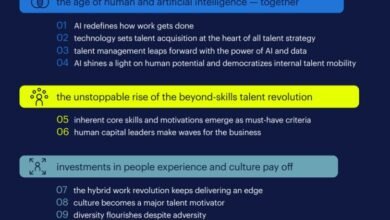
- Reskilling cannot be viewed as a temporary initiative with a specific end goal — continuous learning must be a sustained priority. This is where the real potential for AI lies in the workplace.
Source | www.chieflearningofficer.com | Carol Leaman
“Don’t be a know-it-all; be a learn-it-all.”
This statement exemplifies the culture change that Microsoft CEO Satya Nadella has been instilling within his organization. And it seems to be working. Since he took over the role, Microsoft’s share price has almost tripled. The company, recently considered a laggard in the fast-paced tech landscape, is now the world’s fourth most valuable company, behind only Google, Apple and Amazon.
Organizations in every industry are recognizing the need to reskill their workforces to compete in an evolving business world. For example, AT&T has famously shown its commitment to internal development through its $1 billion Future Ready initiative. Sourcing talented professionals from outside the company will always be important. However, building on your internal capability is more budget friendly. It’s also a great way to retain critical factors, such as institutional knowledge and cultural integrity, that are lost when people are replaced.
But can an organization ever really be “future ready”? After all, the future is a moving target. No one really knows what’s coming next. Therefore, reskilling cannot be viewed as a temporary initiative with a specific end goal. Continuous learning must be a sustained priority to ensure people are always ready to execute, regardless of what comes next. This is where the real potential for artificial intelligence lies in the workplace — helping individual employees stay knowledgeable and skilled as the business changes around them.
AI is already changing the way work is done through the automation of tasks that are more quickly and accurately completed by a machine. Fears regarding the mass replacement of humans with robots have started to calm. Organizations are shifting instead to focus on a future in which people work alongside machines and focus on the skills that are uniquely human. However, while business leaders are recognizing the potential for AI, only 3 percent are planning significant increases to their training budgets to support employees during the transition. The writing may be on the wall, but employees are mostly unprepared to enter this new world of work.






